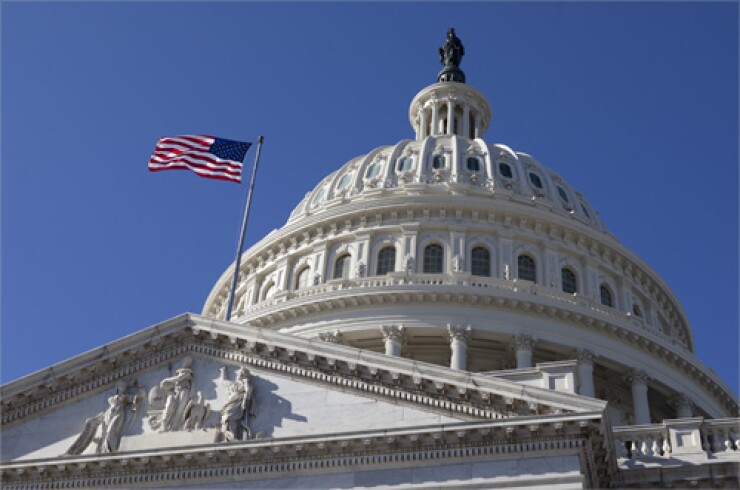Bond-friendly MAMBA legislation in play
3 min read

The existing farm bill, a multiyear, omnibus keystone-sized chunk of legislation was extended via the latest continuing resolution, but aggie bond watchers are hoping a fresh rewrite of the measure will include passing the Modernizing Agricultural and Manufacturing Bonds Act.
MAMBA would increase the limitation on small issue bond proceeds for first-time farmers and triple the cap on industrial development bonds to $30 million from $10 million.
It would also allow up to a quarter of bond proceeds to be used for facilities that are located on or near the same site, align aggie bond definitions with U.S. Department of Agriculture Farm Service Agency, and expand the definition of “manufacturing.”
Bloomberg News
The CR took a temporary bypass around MAMBA. Slim possibilities remain for tacking it onto a last-minute, end of the year tax reform package, but a farm bill rewrite offers the biggest bites at the apple.
“For the farm bill, we will be keeping an eye on the markup process once it begins sometime in either February or June,” said Mitchell Smith, director, government & external affairs, Council of Development Finance Agencies. “If there is a tax title included in the farm bill, we will be advocating for MAMBA’s inclusion. Historically, there have been tax titles in previous farm bills, and given MAMBA’s aggie bond provisions, we believe it would complement nicely.”
Passing MAMBA is viewed as a strong recruitment tool for attracting new blood and funding. “Access to land, the number one challenge for this new generation of farmers and ranchers is inextricably linked to credit accessibility,” said David Howard, policy development director, National Young Farmers Coalition.
“Aggie bonds provide a win-win mechanism that affords tax-free interest to private agricultural lenders, on lower interest loans made to first-time farm owners. This proposed legislation would make several commonsense updates to this important credit accessibility tool.”
Agricultural leaders were grateful the farm bill was carried along in the CR but are advocating for a full re-write. Last week, Zippy Duvall, president, American Farm Bureau Federation issued a statement urging a comprehensive update.
“The current farm bill was written before the pandemic, before inflation spiked, and before global unrest sent shock waves through the food system,” said Duvall in the statement. “We need programs that reflect today’s realities. While an extension is necessary, they’re running out of time to write a new bill.”
MAMBA is co-sponsored by Sens. Sherrod Brown, D-Ohio, and Joni Ernst, R-Iowa who reintroduced it into the Senate in September. Lobbying efforts are ongoing and expanding.
“We’ve spoken with the leadership on House Ways and Means and Senate Finance,” said Smith. “It is generally well-received with no opposition to its changes. We are hoping to add additional co-sponsors in the Senate and have been working with offices and our members to that end.”
The farm bill is a sprawling piece of legislation that was last updated in 2018 with the current version expiring this year. It’s reach extends to farm commodity revenue supports, agricultural conservation, trade and foreign food assistance, farm credit, research, rural development, forestry, bioenergy, horticulture, and domestic nutrition assistance.
The Congressional Budget Office projects that on a ten-year basis, the farm bill’s expected cost is $867 billion for fiscal years 2019 through 2028, which they consider to be budget neutral as compared to extending the 2014 farm bill. The vast majority of the money goes towards the “Nutrition” category that includes “pandemic assistance and administrative adjustments made to SNAP benefit calculations.”







